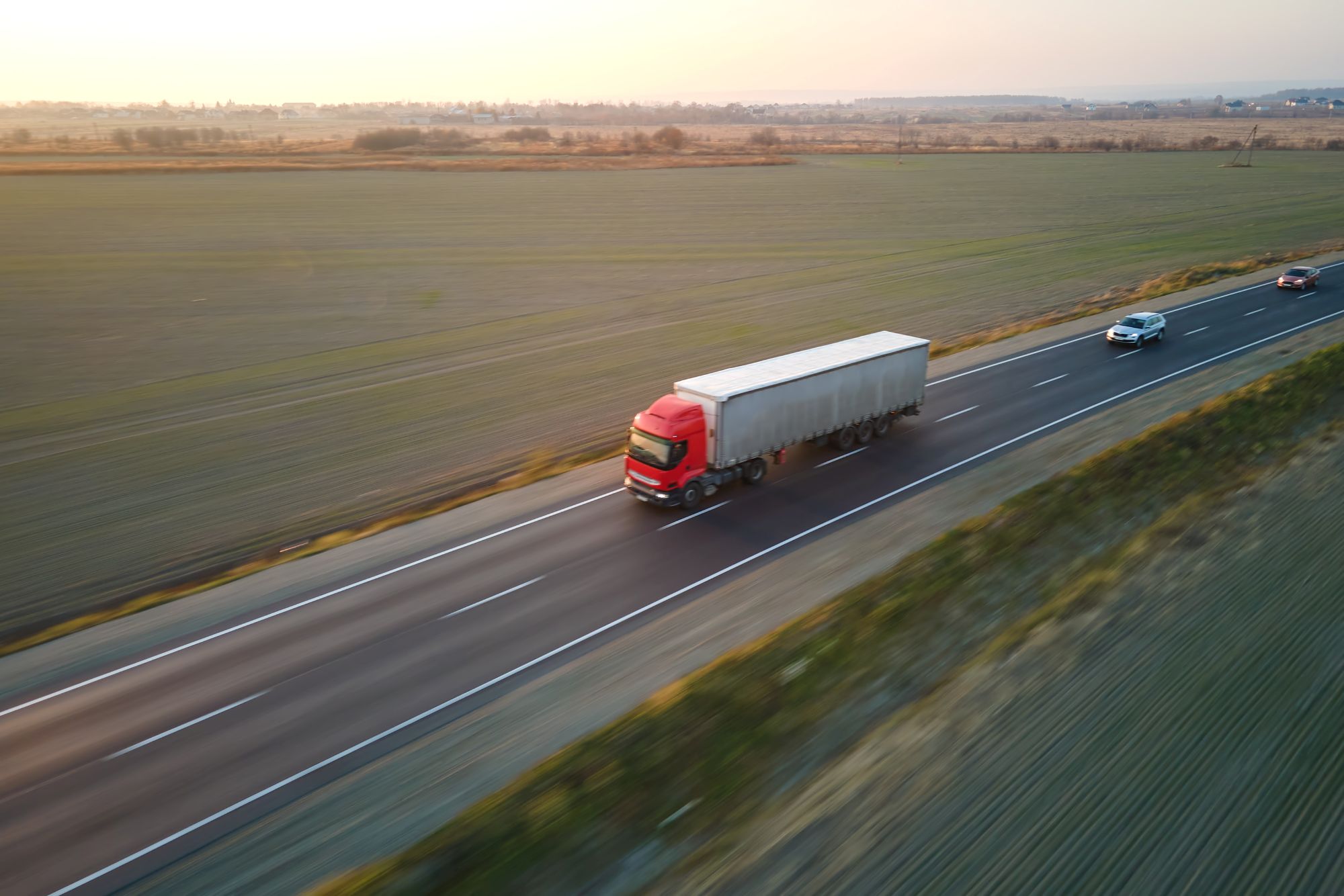
Miranda Blake
Dia dos Motoristas de Veículos Pesados 2025: Dar voz aos camionistas
Criado: 22/01/2025
•
Atualizado: 22/01/2025
No dia 22 de janeiro de 2025, celebra-se o Dia dos Motoristas de Veículos Pesados. Criado pela NN1 Personnel (recrutadores e fornecedores de camionistas no sector da logística), o dia tem como objetivo celebrar os motoristas e tudo o que fazem pela economia e pela sociedade.
Sem os camionistas, que muitas vezes enfrentam várias dificuldades no desempenho da sua função (incluindo estar longe das suas famílias e de casa, longas horas de trabalho e viajar em condições meteorológicas extremas), ficaríamos sem os nossos produtos necessários e sem comodidade. Eles têm sido verdadeiramente heróis ao longo dos últimos anos, bem como antes disso - a pandemia foi apenas um exemplo disso.
A forma como assinala este dia é da sua responsabilidade. O pessoal da NN1 recomenda actos de bondade, por exemplo, oferecendo uma bebida quente aos condutores ou conversando com eles.
Na SNAP, estamos sempre interessados em dar voz aos camionistas. Por isso, neste Dia dos Motoristas de Veículos Pesados, é exatamente isso que estamos a fazer. No seguimento de uma publicação recente na nossa página do Facebook que perguntava sobre a falta de condutores e como garantir que os jovens têm o entusiasmo necessário para se juntarem à indústria, destacamos alguns dos comentários dos camionistas que mostram as suas experiências reais - desde os desafios que enfrentam até ao que adoram no seu trabalho.
Equilíbrio entre vida profissional e pessoal
Um dos principais pontos de discussão para os motoristas é a forma como a função afecta a sua vida pessoal, como não estar presente em momentos importantes da vida, ter de dormir no táxi e o dinheiro não valer os sacrifícios que fazem.
A condução de camiões sempre foi mal paga, com longas horas de trabalho e pouca ou nenhuma vida social. Os jovens de hoje não suportarão os horários absurdos, pois a maioria tem uma vida fora do trabalho. "
Não o recomendo a não ser que esteja no seu sangue. Não é como um emprego normal; é um modo de vida. É preciso compreender no que se está a meter. Não há horários regulares de início e fim, como num trabalho de fábrica. Tudo tem a ver com a natureza do trabalho. Espera-se que faça turnos de 15 horas e noites na cabina, conforme as exigências do trabalho - e que se lixe a sua vida doméstica. "
"70 horas por semana, em média, por 50 mil libras por ano, já não vale a pena. O salário mínimo está a aproximar-se rapidamente do salário médio de um camionista, por isso vou fazer horas extraordinárias numa fábrica por um dinheiro semelhante e poderei ver a minha mulher todas as noites. "
Ter de fazer 60/65 horas por semana, 3/4 noites fora, sem vida social - pelo dinheiro que se ganha, mais valia empilhar prateleiras no Aldi e ter uma vida. Os novos condutores que começam a conduzir não querem tantas horas ou noites fora de casa pela ninharia que ganham. Por isso, quando as empresas começarem a pagar mais aos condutores, começarão a arranjar condutores. "
Quantos que começaram na mesma altura que eu continuaram na indústria? Quantas mulheres se fartaram de não ver os seus maridos? Quantos condutores se fartaram de não ver as suas mulheres e filhos? ".
Porque é que os jovens condutores entrariam neste sector? Longas horas de trabalho, mau salário - podem ganhar mais dinheiro e ter uma vida mais sociável se se formarem noutra área. Infelizmente, agora é demasiado tarde para mim. "
As estatísticas confirmam o feedback. Por exemplo, verificou-se que [os camionistas trabalham, em média, 48 horas por semana] (https://www.gov.uk/government/statistics/road-freight-statistics-2023/overview-of-the-road-freight-sector-2023#:~:text=HGV%20drivers%20worked%20an%20average,(Source%3A%20Department%20for%20Transport)) - em comparação com as 37,5 horas de todos os empregados, este valor é substancialmente superior em 28%. Por isso, não é surpreendente que [apenas um terço dos condutores sinta que os seus empregadores apoiam o equilíbrio entre a sua vida profissional e pessoal] (https://assets.publishing.service.gov.uk/media/651ed5155f7e680014fabe28/hgv-driver-recruitment-retention-rapid-evidence-assess-dft.pdf). Também não é chocante que um número tão significativo de pessoas tenha abandonado o sector, incluindo [67,21% dos condutores com menos de 30 anos que penduraram o seu equipamento de proteção no espaço de um ano após a pandemia] (https://truckstuff.co.uk/blogs/news/does-the-uk-truck-driving-industry-have-an-employee-turnover-issue?srsltid=AfmBOoqunahghhFIsQ3zi8pbriG3HmNJZSmj9SG0dS9rahibXoF73L).
A vida depois do camião
Para alguns dos que comentaram, deixaram a indústria e passaram a desempenhar outras funções que os fazem mais felizes.
*"Recebo mais numa fábrica a maquinar peças... e sei quando vou e quando volto para casa, por isso é fácil.
*A minha carta de condução e o CAP ficam na minha carteira. Ensinem as pessoas a conduzir carros agora.
*"Não vou perder isto nem um bocadinho. A licença ainda é válida. Deixei o CPC ir. Estou farto dele."
Fui da classe 1 durante anos e não voltaria a sê-lo porque posso ganhar o mesmo dinheiro e ter uma vida familiar numa fábrica. Já não vale a pena!".
Voltei a conduzir autocarros porque, onde vivo, paga-se mais por hora. Depois de 15 anos a conduzir veículos pesados, estou a adorar os turnos de oito horas. Não nos apercebemos do que estamos a perder com o tempo de qualidade fora do trabalho até o experimentarmos novamente. "
Seguir os passos da família
Mas, para outros, reflectiram sobre as boas recordações de andar de camião com os pais quando eram crianças, bem como sobre o valor dessa experiência e a forma como esta os levou a entrar no sector depois de terminarem os estudos.
Penso que a indústria não está a pensar na forma como os jovens de 21 anos foram educados. Antigamente, eles saíam com os pais em camiões. Os rapazes no camião desenvolviam as mesmas capacidades cerebrais, mas olhavam para os números da estrada. "
Quando as crianças deixaram de poder ir no vagão com os pais nas férias, foi aí que os jovens deixaram de se interessar. Sejamos realistas: não há propriamente um incentivo financeiro para aderir, pois não? ".
*"Nunca tive férias escolares sem ir com o meu pai no camião.
*Conheciam o trabalho por dentro e por fora antes de saírem da escola.
Foi ótimo ir à Bélgica com o meu pai. United Carriers para uma agência chamada Protem Ltd de Kent. Depois fui para a Marley Extrusions. Nessa altura, e ainda agora, sou ajudante de motorista sem carta de condução - quem me dera ter, mas a minha visão não é grande coisa, por isso faço o melhor que posso como ajudante de motorista. Adoro estar nos meus camiões. "
Paixão pelo trabalho
Do mesmo modo, muitos discordaram do facto de os camionistas não serem o emprego ideal - quer fosse pelo dinheiro ou apenas pelo gosto de conduzir um camião.
Faço três noites por semana por um salário base de 45 mil libras por ano. Mostrem-me outro emprego que eu possa arranjar com duas semanas de formação e que pague isso!".
Há quase 49 anos que trabalho em camiões-cisterna e continuo a trabalhar aos fins-de-semana aos 74 anos, com uma saída nocturna por semana, e posso garantir-lhe que há falta de bons homens no sector. Muitos homens bons morreram antes do seu tempo. Se pudesse, faria tudo de novo. "
*É uma profissão de que ou se gosta ou não se gosta. Eu gostei de o fazer durante muitos anos e estive fora 4-6 semanas de cada vez. Muito pode depender da empresa em que se entra. Eu estive na minha durante 32 anos.
*Passei o meu HGV aos 19 anos. Estou a fazer tramping há quase três anos - adoro.
50% dos motoristas não queriam estar fora, e ninguém queria estar fora aos fins-de-semana. Mais ou menos toda a gente me dizia: 'Perdeste os melhores anos, filho, procura outro emprego'. A verdade é que o dinheiro não era mau se se trabalhasse horas a fio e, se se estivesse lá pelo dinheiro, podia-se ganhar bem. Se quisesse uma vida fácil nos melhores camiões, muito descanso e ser tratado pela sua empresa, estava no emprego errado. "
Sempre fiz mais de 60 horas por semana e tive uma vida boa e confortável e, acima de tudo, uma mulher muito boa, compreensiva e forte ao meu lado. E sim, faria tudo de novo. "
Reconhecer os camionistas neste Dia dos Motoristas de Veículos Pesados
Todos estes comentários deixam claro que, embora os camionistas enfrentem certamente desafios, ainda há muito para amar e, para alguns, é uma carreira que gostam de fazer para toda a vida - por isso, faz sentido que cerca de [metade dos motoristas se sintam satisfeitos com o trabalho] (https://www.truckingdive.com/news/drive-my-way-2023-job-happiness-report/700293/).
Pensamos que é fundamental que todos reconheçam tudo o que os camionistas fazem por nós. Infelizmente, alguns motoristas referiram que sentem uma significativa falta de respeito. Não deveria ser esse o caso - eles deveriam ser reconhecidos pelo que fazem para nos dar todas as necessidades básicas da vida. Como disse um camionista:
"As auto-estradas podem ser as veias do país - mas os camiões são o nosso sangue. Sem eles, não teríamos produtos alimentares, quanto mais mercadorias. "
Por isso, neste Dia dos Motoristas de Veículos Pesados - e em todos os outros dias, de facto - pedimos a todos que reconheçam aqueles que estão na estrada por nós. Os camionistas merecem elogios, respeito e muito mais.



